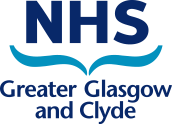Safe Use of Lithium
Key messages:
- Lithium is a gold standard treatment for maintenance treatment of bipolar affective disorder
- Lithium has a high potential for toxicity and requires careful monitoring to ensure its safe and effective use
- Staff and patients using lithium must be aware of the common signs and symptoms of toxicity. Symptoms of toxicity include: coarse tremor, muscle twitching or weakness, unsteady gait, GI upset, blurred vision, slurred speech
- Lithium preparations vary in bioavailability and should be prescribed as a brand (Priadel® is the recommended lithium preparation in NHS GG&C)
- A lithium level should be taken for all patients on lithium on admission to hospital and advice on interpreting levels can be obtained from NHS GG&C mental health services (MHS)
Lithium is an established and effective treatment for bipolar affective disorder, recurrent depression and self injurious behaviour. It has a narrow therapeutic index, with a high potential for toxicity and therefore careful monitoring is required for its safe use.
Therapeutic drug monitoring
Lithium should be dosed according to plasma levels with a target level of 0.4 to 1mmol/L. A lithium level should be taken around 5-7 days after initiation and dose changes. The level should be taken approximately 12 hours after the last dose of lithium (in twice daily dosing, the level should be taken prior to the morning lithium dose). Lithium clearance is exclusively renal, therefore any change in renal function or evidence of dehydration should prompt an urgent lithium level. A lithium level should feature as standard admission bloods for any patient on lithium (irrespective of when lithium levels were last obtained).
Monitoring
Ongoing monitoring for lithium therapy should be undertaken according to local NHS GG&C lithium standards and should include:
• Interactions: especially in relation to any medicines that are known to affect renal function or decrease lithium excretion (e.g. NSAIDs, diuretics, ACEIs , ARBs).
• Side effects: commonly include; polyuria, polydipsia, nocturia, diabetes insipidus, metallic taste, fine tremor.
• Signs and symptoms of toxicity (see above): any suspicion of toxicity should prompt an urgent lithium level, although toxic effects may develop within the normal range especially in older people.
• Education: to support informed patient choice. The choice and medication website hosted by NHS inform is a useful resource offering user friendly information on medicines used to treat mental health conditions. www.choiceandmedication.org/nhs24
NHSGG&C MHS have developed a Lithium bundle which can help support wards to comply with the standards. Although developed for use on mental health wards, this may be a useful tool for managing patients on lithium during an acute hospital inpatient stay.
Originally published 20/02/18. Links updated 15/04/2022. Medicines update blogs are correct at the time of publication.
